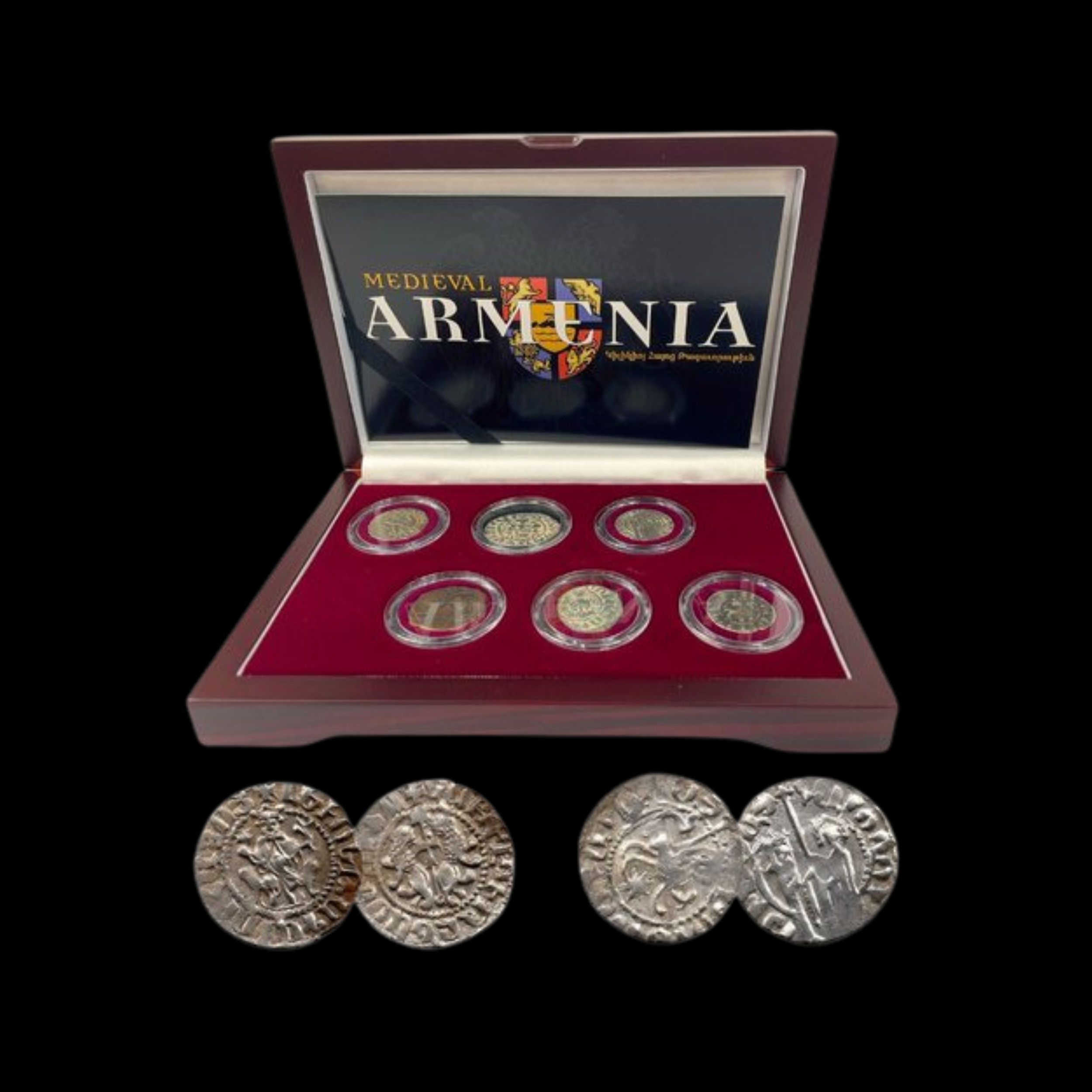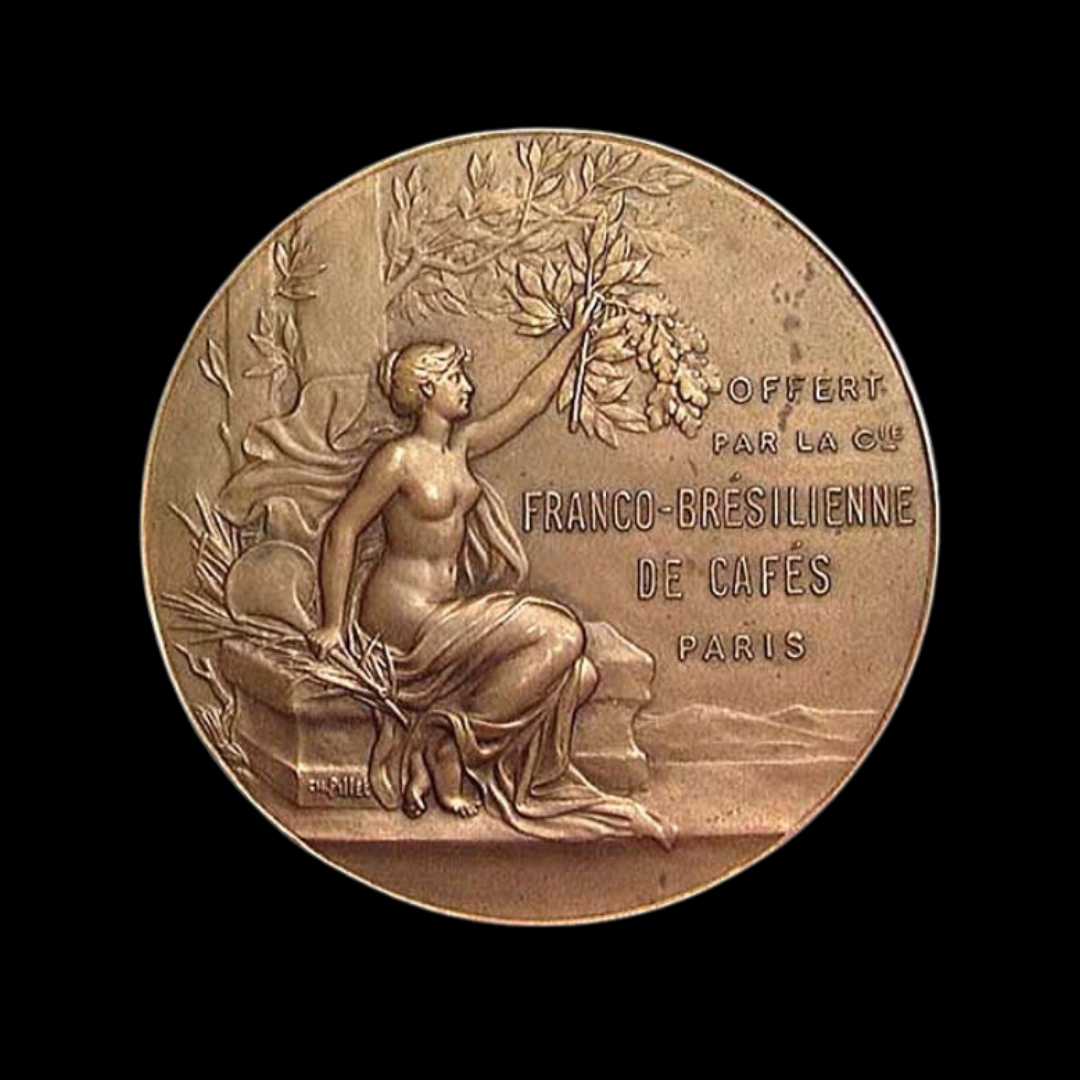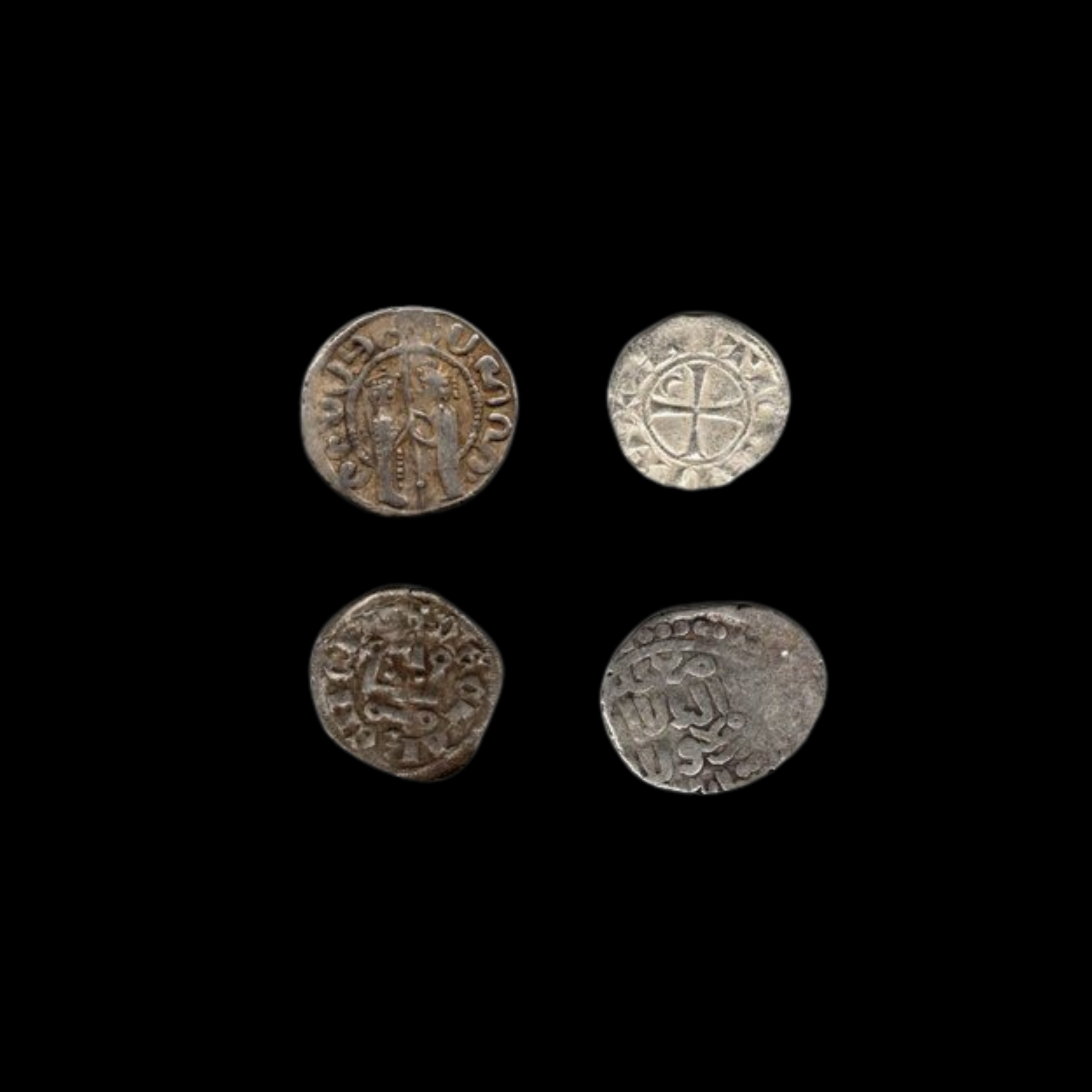 Image 1 of 2
Image 1 of 2

 Image 2 of 2
Image 2 of 2



Armenian Silver Tram of Levon I (about 800-825 years ago)
This is a silver tram coin from the Armenian Kingdom of Cilicia, minted during the reign of its first king, Levon I, who established a Christian Armenian state during the era of the Crusades.
Coin Description:
Front side (Obverse): Shows King Levon I seated on his throne in royal regalia
Back side (Reverse): Displays two lions flanking a cross, representing royal power and Christian faith
Technical Details:
Silver composition (AR)
Tram denomination (primary silver currency of Armenian Cilicia)
Certified by NGC with grade AU (About Uncirculated)
Minted during 1198-1219 CE
Historical Significance: The establishment of the Armenian Kingdom of Cilicia under Levon I represented a remarkable revival of Armenian national identity after the loss of their ancestral territories. This "Little Armenia" became an important player in Mediterranean politics and commerce, serving as a crucial link between East and West. Levon's diplomatic skills allowed him to balance relations with Byzantines, Crusaders, and Muslim powers while maintaining Armenian independence. The Christian symbolism on these coins emphasizes Armenia's status as the first nation to adopt Christianity as its state religion.
This is a silver tram coin from the Armenian Kingdom of Cilicia, minted during the reign of its first king, Levon I, who established a Christian Armenian state during the era of the Crusades.
Coin Description:
Front side (Obverse): Shows King Levon I seated on his throne in royal regalia
Back side (Reverse): Displays two lions flanking a cross, representing royal power and Christian faith
Technical Details:
Silver composition (AR)
Tram denomination (primary silver currency of Armenian Cilicia)
Certified by NGC with grade AU (About Uncirculated)
Minted during 1198-1219 CE
Historical Significance: The establishment of the Armenian Kingdom of Cilicia under Levon I represented a remarkable revival of Armenian national identity after the loss of their ancestral territories. This "Little Armenia" became an important player in Mediterranean politics and commerce, serving as a crucial link between East and West. Levon's diplomatic skills allowed him to balance relations with Byzantines, Crusaders, and Muslim powers while maintaining Armenian independence. The Christian symbolism on these coins emphasizes Armenia's status as the first nation to adopt Christianity as its state religion.
This is a silver tram coin from the Armenian Kingdom of Cilicia, minted during the reign of its first king, Levon I, who established a Christian Armenian state during the era of the Crusades.
Coin Description:
Front side (Obverse): Shows King Levon I seated on his throne in royal regalia
Back side (Reverse): Displays two lions flanking a cross, representing royal power and Christian faith
Technical Details:
Silver composition (AR)
Tram denomination (primary silver currency of Armenian Cilicia)
Certified by NGC with grade AU (About Uncirculated)
Minted during 1198-1219 CE
Historical Significance: The establishment of the Armenian Kingdom of Cilicia under Levon I represented a remarkable revival of Armenian national identity after the loss of their ancestral territories. This "Little Armenia" became an important player in Mediterranean politics and commerce, serving as a crucial link between East and West. Levon's diplomatic skills allowed him to balance relations with Byzantines, Crusaders, and Muslim powers while maintaining Armenian independence. The Christian symbolism on these coins emphasizes Armenia's status as the first nation to adopt Christianity as its state religion.
Leo II (Armenian: Լեւոն Ա Մեծագործ, romanized: Levon I. Metsagorts; 1150 – 2 May 1219)[a] was the tenth lord of Armenian Cilicia,[4] ruling from 1187 to 1219,[7]: [page needed] and the first king to be crowned, in 1198/9 (sometimes known as Levon I the Magnificent[4]).[b][4][7]: [page needed] Leo eagerly led his kingdom alongside the armies of the Third Crusade and provided the crusaders with provisions, guides, pack animals and all manner of aid.[3]
He was consecrated as king on 6 January 1198[7]: [page needed] or 1199.[4]
He was the younger son of Stephen, the third son of Leo I, lord of Armenian Cilicia.[7]: [page needed] His mother was Rita, a daughter of Sempad, Lord of Barbaron.[10] Leo's father, who was on his way to attend a banquet given by the Byzantine governor of Cilicia, Andronicus Euphorbenus,[4] was murdered[7]: [page needed] on 7 February 1165.[citation needed] Following their father's death, Leo and his elder brother Roupen lived with their uncle.[4][11]









